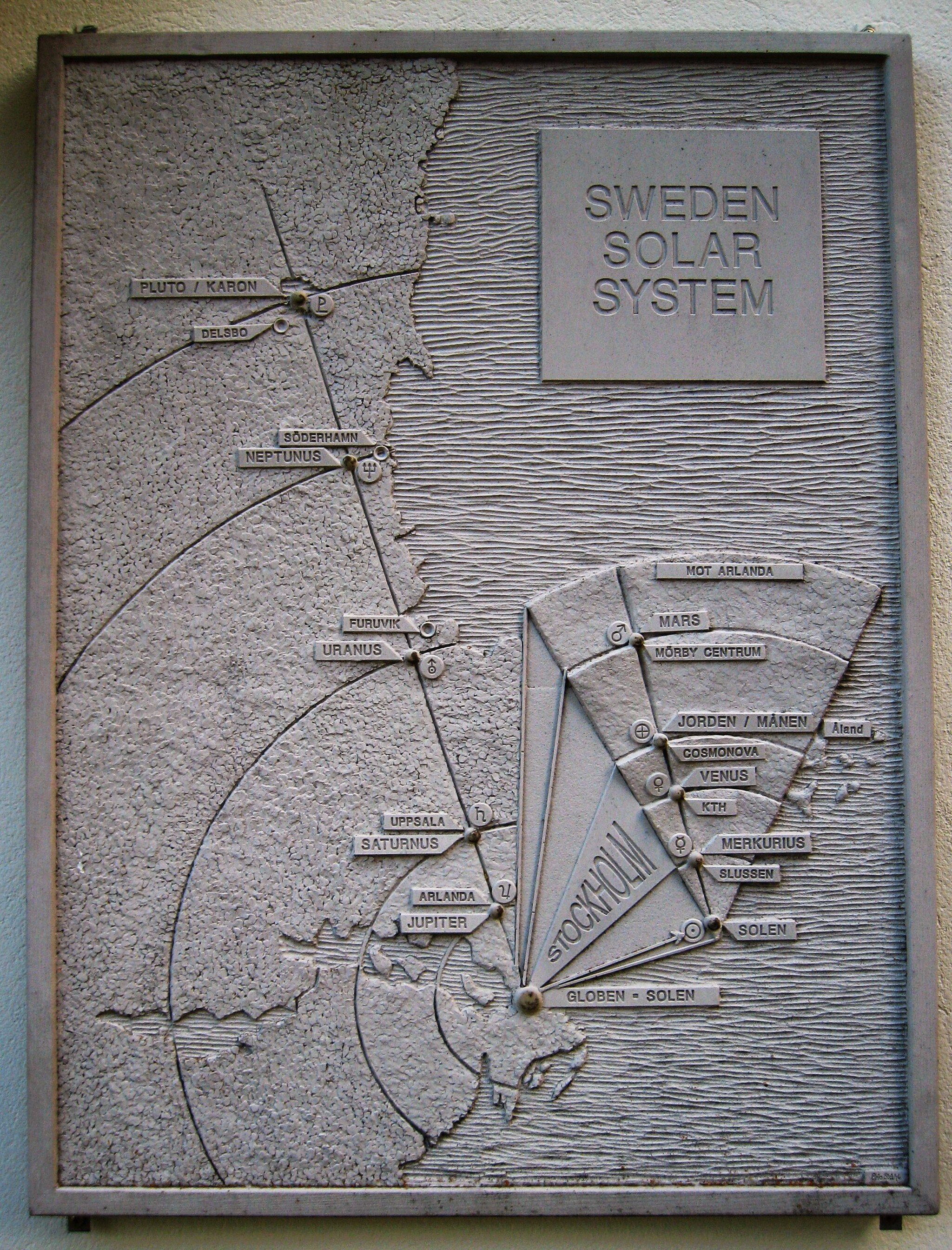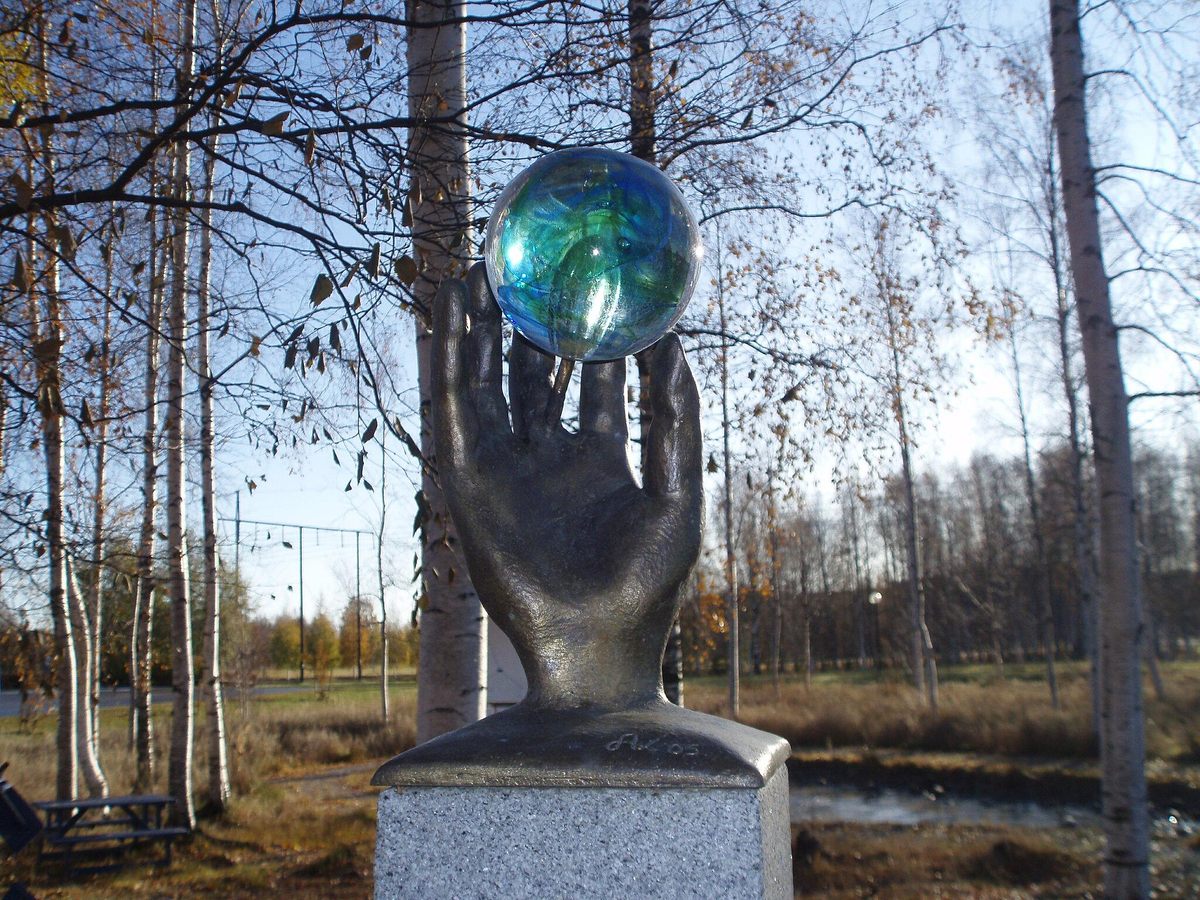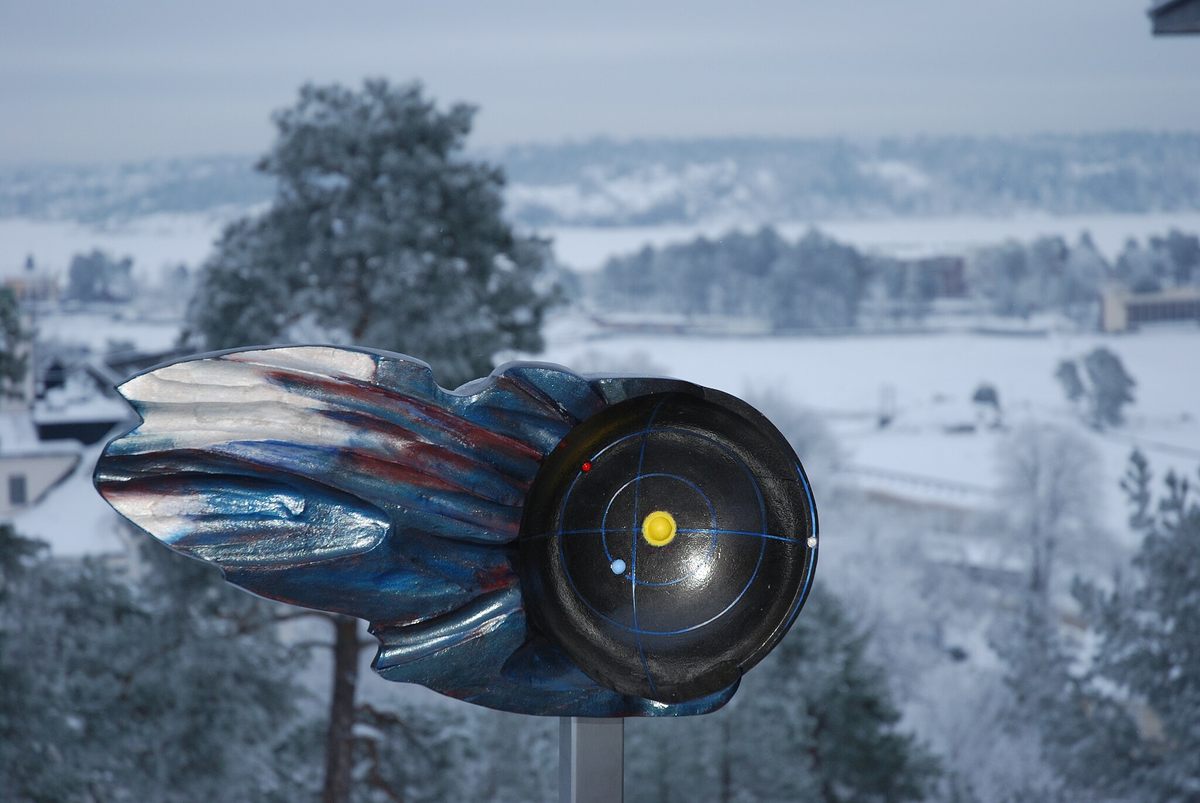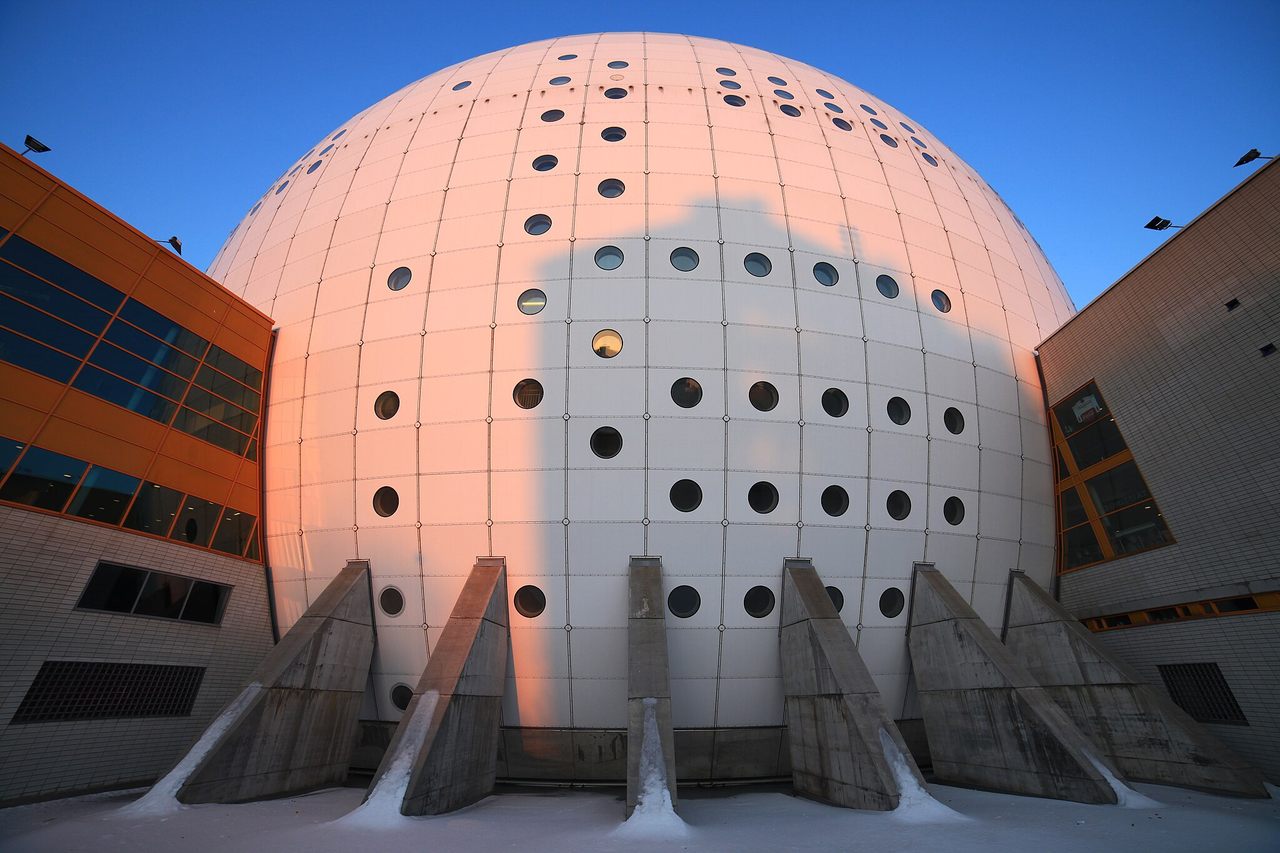There’s an Entire Solar System Hiding In Sweden
Get ready for the most peculiar road trip that will help you understand the vastness and emptiness of the solar system—and Sweden.
It’s hard to miss when you walk around southern Stockholm: the giant white ball known officially as the Avicii Arena, which locals simply call Globen, or “the Globe.” With a diameter of 360 feet (110 meters), an inner height of 279 feet (86 meters), and a volume of 21.4 million cubic feet (605,000 cubic meters), it was until recently the largest spherical building in the world.
Named After a Beloved DJ
Inaugurated in 1989 and known until 2021 as the Ericsson Globe, it was renamed after Avicii, a beloved Swedish DJ, who died in 2018. Two external gondolas can take up to 12 passengers each to the top of the globe for a truly panoramic view of the Swedish capital.
The venue is used mainly for ice hockey games, concerts, and other mass events, including the Eurovision Song Contest (twice, once in 2000 and again in 2016). In 2018, Metallica drew a record crowd of 17,303 fans to the Globe.
There is another thing that is unique about the Avicii Arena, one that is not immediately obvious even from its size: It is the center of the world’s largest scale model of our solar system. In other words, the Globe is the Sun, and distributed throughout Stockholm, its suburbs, and further parts of Sweden, there are models of the planets, comets, and other heavenly bodies that are our closest neighbors in our little corner of the universe, all on a scale of 1:20 million.

Uma Thurman’s Grandma in the Nude
The Sweden Solar System—probably also the world’s largest scale model per se—makes full use of the country’s vastness. If there is one thing Sweden has plenty of, it is space. At 172,752 square miles (447,425 square kilometers), it is Europe’s fifth-largest country (after Russia, Ukraine, France, and Spain). Due to its peculiarly elongated shape, Sweden’s southernmost point is closer to Rome (930 miles, or 1,500 kilometers) than to its northernmost point (975 miles, or 1,568 kilometers).
At that southernmost point, in Smygehuk, you’ll find a bronze statue of Uma Thurman’s grandmother in the nude. But that’s another story.
Outside the Institute of Space Physics in Kiruna, an Arctic mining town and Sweden’s answer to Cape Canaveral, 590 miles (950 kilometers) north of the Globe, a plaque represents the termination shock at the outer edge of the heliosphere, an oft-used marker for the border of our solar system. The plaque was dedicated in 2004, when Voyager 1 had passed the termination shock.

A more impressive sculpture is planned to mark the termination shock at Kiruna. It will make a better terminus for a peculiar kind of road trip: one that will help you understand the vastness and emptiness of both the solar system and of Sweden. It would also illustrate the relative smallness of even the Sun within our solar system, not to mention the planets and other celestial objects, models of which are positioned at appropriate distances and in appropriate sizes between Stockholm and Kiruna.
Planets With Stockholm Addresses
Models of comets, dwarf planets, and other more eccentric members of the solar system family are generally located south of Stockholm. Not to complicate our road trip too much, we will concentrate on points north, going past all the main planets. And it starts simple enough: The first few ones all have Stockholm addresses.
The planet Mercury is placed 1.8 miles (2.9 kilometers) from the Globe, just outside Stockholm City Museum, and is no more than 9.8 inches (25 centimeters) in diameter. For Venus, go to Vetenskapens Hus (House of Science) at the Royal Institute of Technology. This sphere is 24 inches (62 centimeters) in diameter, and is located 3.4 miles (5.5 kilometers) from the Globe.

Earth is at the Swedish Museum of Natural History, 4.7 miles (7.6 kilometers) from the Globe. It’s a sphere 26 inches (65 centimeters) in diameter. The museum also houses a model to scale of the Moon (7.1 inches, 18 centimeters). Mars (14 inches, 35 centimeters) is on the upper level of Mörby Centrum, a shopping center and metro station in the Stockholm suburb of Danderyd, at 7.2 miles (11.6 kilometers) from the Globe.
There is a big gap between the small solid planets on the inside of the solar system and the first of the gas giants—both in the heavens and in Sweden. Jupiter is represented by a light ring 24 feet (7.3 meters) in diameter inside the Clarion Hotel at Stockholm Arlanda Airport, 25 miles (40 kilometers) from the Globe.
Missing in Action: Saturn
In 2009, Saturn was represented by a flower carpet with a diameter of 20 feet (6.1 meters) on Celsius Square, outside the old observatory of Anders Celsius (yes, he of temperature fame) in the center of Uppsala, 45 miles (73 kilometers) from the Globe. The idea was to build a dome over the planetarium of a local school as a more permanent representation of Saturn, but the funding fell through. As of today, it is the only planet not represented in the Sweden Solar System. There are still plans to build a Saturn in Uppsala, and local schools have already created models of some of the moons.

A first likeness of Uranus was vandalized, so a second one (8 feet 6 inches, 2.6 meters) was installed in 2012 near Stora Magasinet in Lövstabruk, 77 miles (124 kilometers) from the Globe. In keeping with the nautical inclination of the planet’s titular deity, Neptune (8 feet 2 inches, 2.5 meters) is in the coastal town of Söderhamn. This three-ton acrylic Neptune is 142 miles (229 kilometers) from the Globe, and is illuminated at night from the inside.
Plutinos and Other Trans-Neptunian Objects
A “Trans-Neptunian object” rather than a planet these days, Pluto (4.7 inches, 12 centimeters) and its largest moon Charon are nevertheless included in the Sweden Solar System. Find them in a park near the center of Delsbo, 190 miles (300 kilometers) from the Globe. Farther beyond Neptune (and farther north) are Ixion (2.6 inches, 6.5 centimeters), a so-called “plutino,” in Härnösand, 224 miles (360 kilometers) from the Globe; Eris (5.1 inches, 13 centimeters), in Umeå, 320 miles (510 kilometers) from the Globe; and Sedna (3.9 inches, 10 centimeters), in Luleå, 567 miles (912 kilometers) from the Globe.
From there, it’s still a four-hour drive through the vast wilderness of Swedish Lapland until you reach Kiruna at the outer edge of the Sweden Solar System.

If that’s a bit too much road-tripping for you, stick to southern Sweden, where you can pick from a variety of scale models strewn across the land, including Asteroid 36614 “Saltis,” at a school in Saltsjöbaden, near the Stockholm Observatory where it was discovered in 2000. It was named Saltis, after the observatory’s nickname.
An Alien Object in Plönninge
Asteroid 433, “Eros,” was inaugurated at Mörbyskolan in Danderyd on Saint Valentine’s Day 2000, the same day a space probe entered orbit around the asteroid. The model, only 2 mm wide, is made of pure gold. The comet Swift-Tuttle at the Kreativum science center in Karlshamn is 240 miles (386 kilometers) from the Globe, representing the farthest distance the comet gets from the Sun. At its closest, it would need to be in central Stockholm. You can find Halley’s Comet in Skövde, the comet Makemake in Gothenburg, and the allegedly “alien” object ‘Oumuamua in Plönninge.

The concept for the Sweden Solar System was born in the late 1990s, when a professor cycling past Globen wondered how big and how far the planets would need to be if it represented the sun. Originally conceived as the Stockholm Solar System with planets no further than Jupiter, the idea was soon taken up by schools, science institutions, and other organizations further afield.
The Sweden Solar System currently consists of more than 60 objects distributed across 26 locations in Sweden. The latest to be added are the dwarf planet Varda and its moon Ilmarë in Uddevalla in September 2021. Plans to add more scale models of dwarf planets, comets, and asteroids are in the works.
This article originally appeared on Big Think, home of the brightest minds and biggest ideas of all time. Sign up for Big Think’s newsletter.
















Follow us on Twitter to get the latest on the world's hidden wonders.
Like us on Facebook to get the latest on the world's hidden wonders.
Follow us on Twitter Like us on Facebook